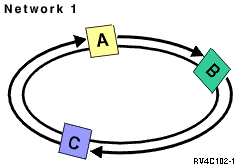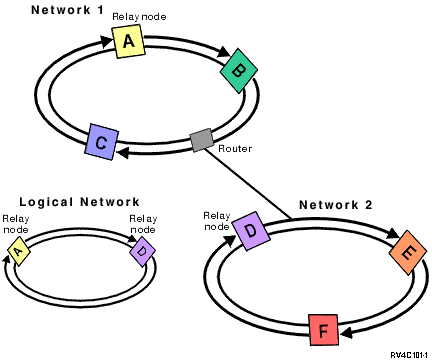Heartbeat monitoring is a cluster resource services function that ensures that each node is active by sending a signal from every node in the cluster to every other node in the cluster to convey that they are still active.
 When the heartbeat for a node fails, cluster resource services
takes the appropriate action.
When the heartbeat for a node fails, cluster resource services
takes the appropriate action.
Consider the following examples to understand how heartbeat monitoring works:
Example 1

With the default (or normal) settings, a heartbeat message is sent every 3 seconds from every node in the cluster to its upstream neighbor. For example, if you configure Node A, Node B, and Node C on Network 1, Node A sends a message to Node B, Node B sends a message to Node C, and Node C sends a message to Node A. Node A expects an acknowledgment to the heartbeat from Node B as well as an incoming heartbeat from the downstream Node C. In effect, the heartbeating ring goes both ways. If Node A did not receive a heartbeat from Node C, Node A and Node B continues to send a heartbeat every 3 seconds. If Node C missed four consecutive heartbeats, a heartbeat failure is signaled.
Example 2

Let's add another network to this example to show how routers and relay nodes are used. You configure Node D, Node E, and Node F on Network 2. Network 2 is connected to Network 1 using a router. A router can be another iSeries™ server or a router box that directs communications to another router somewhere else. Every local network is assigned a relay node. This relay node is assigned to the node that has the lowest node ID in the network. Node A is assigned as the relay node on Network 1, and Node D is assigned as the relay node on Network 2. A logical network containing Node A and Node D is then created. By using routers and relay nodes, the nodes on these two networks can monitor each other and signal any node failures.